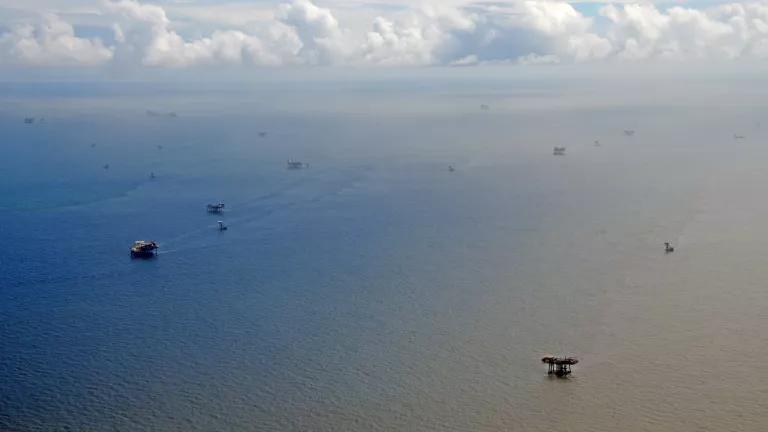West Coast Groundfish Habitat: Collaboration Rules

The Pacific Fishery Management Council recently approved changes to federal rules governing bottom trawl fishing off the West Coast, making life safer for sensitive organisms like deep-sea corals and sponges.
This sounds like an ordinary regulatory update, and in many ways, it was: the decision-making body gathered information, issued reports, held numerous hearings, and eventually voted on a package of changes that will now go through several administrative steps for approval.
It was unusual, however, in that it was driven primarily by stakeholder collaboration. Fishermen and conservation representatives sat down and hammered out a shared plan for increasing protection for sensitive habitats while also improving fishing opportunity.
This didn’t happen easily or quickly. In fact, the Essential Fish Habitat review started with environmentalists and fishermen lining up on opposite sides of the issue and preparing for a fight. Conservation groups were ready to push for larger trawl closures to protect more habitat, while fishermen wanted areas re-opened to increase fishing opportunity. The Pacific Council was facing what seemed like a zero-sum game, where any improvement on one side meant a loss on the other.
Moreover, the Council's habitat review was happening against a backdrop of several decades of disagreement, litigation, and general struggles with groundfish management, centering on certain overfished rockfish stocks and the need to rebuild these species and protect their habitat. NRDC litigation had played a central role in spurring federal managers to institute reduced catch limits and area closures—actions that were viewed very differently by industry and environmentalists.
In this context, it was a bold move when California Shellfish Company's Special Projects Leader Tom Libby approached me in the hallway at a Council meeting and suggested we think about working together on the habitat issue, to try and come up with outcomes that work for everyone. I jumped at the chance, and we quickly formed a small collaborative group with Oregon Trawl Commission Director Brad Pettinger, Shems Jud from Environmental Defense Fund, and Kate Kauer from The Nature Conservancy.
We spent the next several years gathering fishermen and environmental representatives into the same room, listening to each other and building trust. We organized dozens of meetings in fishing ports up and down the West Coast. It wasn’t always fun, given the decades of mistrust that had built up between the two sides; some people had a lot to get off their chests before they were able to sit down and talk. But we got through it with no fistfights or chairs thrown, which was our benchmark for success.
Once the air was cleared, the first step in the port meetings was to assemble information. We brought large-scale nautical charts, dive reports, and a spatial database with bathymetry, substrate, coral and sponge records, and fishing effort layers. Fishermen showed up with their charts and plotters, and their accumulated knowledge from years of fishing. Slowly, area by area, we cross-referenced the scientific data with fishermen’s knowledge, and arrived at a shared understanding of the seabed and its features.

The next step in the port meetings was to exchange ideas and refine them into proposals for regulatory change. Participants suggested various modifications to bottom trawl regulations, including both re-openings and new closures. We chewed over the collected ideas, throwing some out, refining others, and coming up with still new ones. Over the course of three or four meetings in each port, we arrived at a set of changes that generally had consensus support—or at least that everyone could live with.

The key was finding ways to create value on both sides. Fishermen were interested in re-opening certain soft substrate areas that were historically important for fishing. Environmental groups were interested in protecting areas of known sensitive habitat—things like rocky reefs, coral and sponge gardens, or specific landforms like canyons, banks, and escarpments. These goals were not mutually exclusive of each other, because fishermen generally don’t want to trawl over sensitive habitat (it snags and tears their gear), and from a conservation perspective re-opening an area to trawling may be less concerning if it is soft bottom (which in some cases has been shown to be less sensitive to trawling).
By gathering a wide range of suggestions, and refining and tailoring them carefully, we were able to create a package that achieved both goals—improving fishing opportunity and increasing the level of protection for sensitive habitats. This changed the dynamic from a zero-sum game with opposing stakeholders, to a win-win outcome with stakeholders pulling in the same direction.
Building consensus around a package of changes also made the Pacific Council’s job a lot easier, and the collaborative proposal was largely adopted by the Council at its recent April meeting. This brought to a close the Council’s nearly seven-year groundfish habitat review, and should result in regulatory changes that help maintain wild ocean habitats as well as a plentiful supply of fresh local seafood.
* * *
As a final note, I’d like to acknowledge the debt owed to the fishermen who took the time to sit down with us and share their thoughts, stories, and ideas. This collaboration was made possible by their willingness to open up and discuss their fishing history—even bringing their plotters, showing tow lines, and talking us through exactly what they found in each spot. That’s not an easy thing to do, for people operating on thin margins in a competitive industry. Credit for this collaboration goes to them, for stepping up, trusting the process, and sharing their knowledge.



